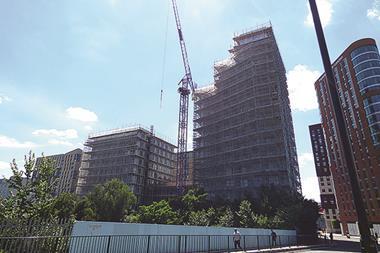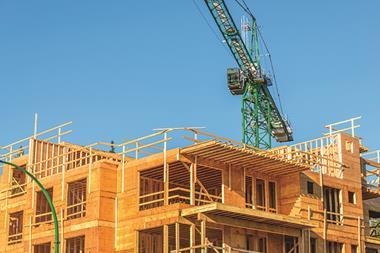The target set in the Budget to build 300,000 homes is ambitious, considering efforts to date have been largely unsuccessful in tackling the housing supply/demand imbalance.

But while there is no silver bullet for the housing crisis, we are at least moving in the right direction. For the first time, Philip Hammond specifically mentioned the “purpose-built private rented sector”, pledging £8bn of new financial guarantees to drive private housebuilding and build-to-rent.
Potential solutions, however, need to be multi-tenure in nature and encompass affordable housing, build-to-rent, build-for-sale, shared ownership and retirement housing. If a multi-tenure approach is adopted, it makes sense that a significant difference in increasing supply is likely to be driven by a number of housing sources. Currently the top 10 developers produce nearly half of all new housing, but while a £1.5bn funding package aimed specifically at SME developers via the Home Building Fund offers a vital shot in the arm for the sector, supporting developers wasn’t a continuous theme in this Budget.
Then we have the proposal to use compulsory purchase orders so local authorities can purchase stalled sites and improve urban site assembly. It’s a myth that developers don’t build on land where it is viable and profitable to do so. These punitive measures fail to take into account the uncertainty and expense of seeking planning permission and the risk of resources lying idle. Neither do they take into account that half of Britain’s land is owned by the government. That said, it is encouraging to hear that the government will push councils into granting more planning permissions.
The promise to use urban land as efficiently as possible is positive. The consultation will also consider introducing minimum densities for housing development in city centres and around transport hubs, alongside policy changes to support the conversion of empty space above high-street shops. The latter is a practice already used across many of our developments.

Turning again to local authorities, fewer affordable homes have been built than those priced at above market rates. Over the past three years, although 42,500 households in London required below-market-rate housing, according to Savills only 8,800 affordable homes each year have been built, suggesting that private sales are being used to subsidise affordable housing. Hammond has committed a further £1bn to help councils fund the delivery of new homes, but to meet specific demand it is about building the right type of housing. Few developers are delivering any meaningful number of build-for-sale homes for older citizens, for example.
A reduction in the 3% additional stamp duty levy for institutions would boost the delivery of homes
The removal of stamp duty for first-time buyers of homes up to £300,000, although helpful, won’t have a material impact for them or the supply side. A reduction in the 3% additional stamp duty levy for institutions, however, would attract more investment into the sector and boost the delivery of homes.
We’re not sure what the world will look like post Brexit, particularly as many EU migrants work on construction sites. The £204m pledged for driving innovation and training in the construction sector is aimed at addressing the sector’s skills shortage and will be an important way to mitigate any potential effect of this changing landscape.
No single method will provide the all-encompassing solution to the problem of housing shortage, but it is reassuring to see the government considering a range of methods and that we, as property investors, can contribute.
Alex Greaves is head of residential investment at M&G Real Estate
Topics
End of year expert opinion
- 1
 Currently reading
Currently readingGovernment is moving in right direction to address housing shortage
- 2
- 3
- 4
- 5

































No comments yet